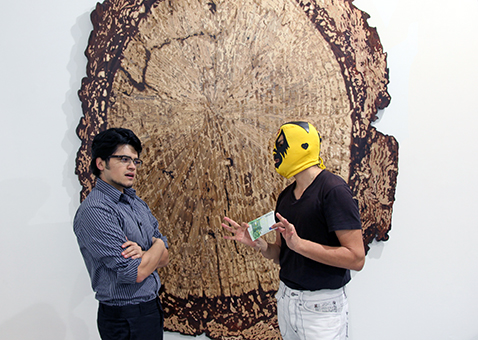Money Talk: Should Prices Appear In Art Reviews?

If you were to say to the grown-ups: “I saw a beautiful house made of rosy brick, with geraniums in the windows and doves on the roof,” they would not be able to get an idea of that house at all. You have to say to them: “I saw a house that cost $20,000.” Then they would exclaim: “Oh, what a pretty house that is!” – Excerpt from "The Little Prince" (Written when $20,000 was a great sum of money)
Pancho Panoptes: Bullocks! Of course you shouldn’t include prices in art reviews! It’s never been about the money. You’re an art critic not a marketer; your job is to engage with the work and attempt to find its social, cultural, and historic value, not its monetary one. Furthermore, I think most of us poor and sexy Berliners care more about whether the artwork on display is worth seeing and experiencing, not whether we could afford it. We approach art with our eyes and heart my friend, not with our pockets.
Jovanny Varela Ferreyra: I don’t blame you for being an idealist when it comes to art, my dear Pancho, but sooner or later you’ll have to face the 21st century. It’s not only art that we are dealing with but also an art market. The moment your artwork enters a gallery with a price tag on it, guess what, the price tag becomes a part of the work. The same way that your materials, social background and process inform the content of your work, so does the monetary value it carries at that particular point.
A Little Back Story
A few weeks ago we received a complaint call at the BAPS office from Chert. It was the gallery director asking us to remove the price range of the works from a recently published article reviewing their current exhibition. While this was certainly not the first time such request is made on us by a gallery (each gallery, for their own reasons, may wish to withhold that information), it was one that came with great earnestness. Now, we love Chert – it was featured in our list of best art spaces in Skalitzer Straße – but we had to be clear that listing the price of the works was a priority of ours as it was a service to our readers.
The incident, not surprisingly, sparked conversations at the office amongst the writers, making us consider the pros and cons of this service. The day took a rather humorous note when Hyperallergic, a popular New York art blogazine, coincidentally ran an article that same day regarding the exact topic we had been discussing. I felt, at that point, that there was enough incentive to partake in the conversation.

Because of the good reception our last “crazy talk” article received, I invited fellow artist Pancho Panoptes to engage with me in this “money talk.” As our setting for this conversation, we visited Nature Morte gallery in Berlin, which is currently housing an exhibition aptly titled “Montessori: Lessons in Economics” by Indian sculptor L.N. Tallur. The exhibition features a number of witty and exquisitely crafted sculptures with participatory installations that focus on the nature of value.
Where Were We?
PP: I don’t buy your argument. Why should a price tag also inform a work of art? Some works carry priceless emotional value; it’s almost a pity having to put a monetary value in them. I feel that, most often than not, the price of the work interferes with the experience of the work.
JVF: I see what you mean. But I find it rather easy to get carried away when one talks about “passion” or “emotion” in terms of value. An artist could spend many passionate years attempting to perfect the technique of painting the most exquisite apple, one that could make your mouth water by just staring at the painting. But, at the end of the day, it’s just wanking it, isn’t it?
PP: I don’t follow. We’re talking about art not about sexual frustration – what do you mean?
Be the first to write a comment.
Your feedback
